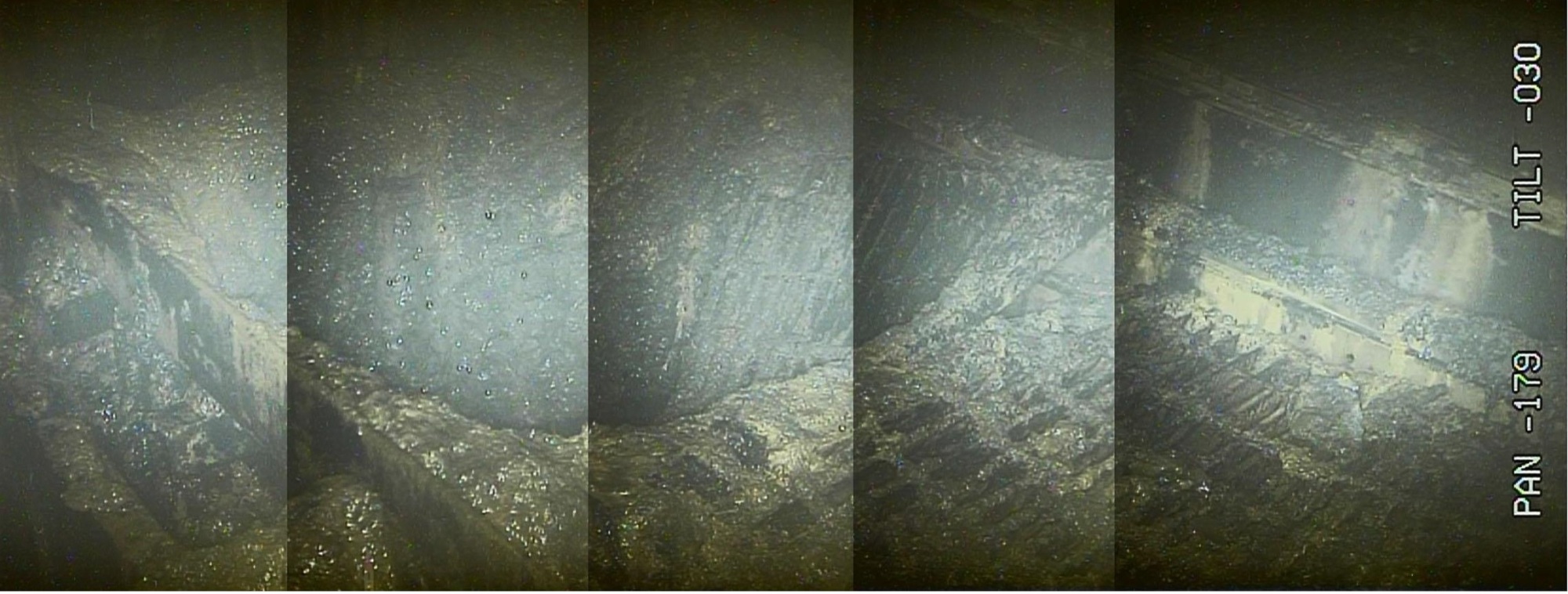
Above, the hole in the grating at Fukushima
A record radiation
level has been detected inside the No. 2 reactor at the damaged Fukushima
Daiichi nuclear complex, with the estimated reading of up to 530 sieverts per hour, the
plant operator said Thursday.
The reading means
a person could die from even brief exposure, highlighting the difficulties
ahead as the government and Tokyo Electric Power Company Holdings Inc. grope
their way toward dismantling all three reactors that melted down in the March
2011 nuclear disaster.
The plant operator also announced that based on an image
analysis, a 1-square-meter hole has been found on a metal grating beneath the
reactor pressure vessel, likely caused by melted nuclear fuel that fell through
the vessel.
The new radiation level, described by some experts as
“unimaginable,” far exceeds 73 sieverts per hour, the previously highest
radiation reading monitored in the interior of the reactor.
An official of the
National Institute of Radiological Sciences said medical professionals have
never considered dealing with this level of radiation in their work.
According to
TEPCO, the extremely high radiation level was detected inside the containment
vessel, in the space around 2.3 meters away from the base of the reactor
pressure vessel.
According to the institute, 4 sieverts of radiation
exposure would kill one in two people.
Experts say 1,000 millisieverts, which equals 1 sievert,
could lead to infertility, loss of hair and cataracts, while exposure to
radiation doses above 100 millisieverts increases the risk of cancer.
The latest
discovery spells difficulty in removing the fuel debris as part of
decommissioning work at the plant. The government and TEPCO hope to locate the
fuel and start removing it from a first reactor in 2021.
The debris is
believed to have been created as nuclear fuel inside the reactor pressure
vessel overheated and melted due to the loss of reactor cooling functions.
In the coming
weeks, the plant operator plans to deploy a remote-controlled robot to check
conditions inside the containment vessel, but the utility is likely to have to
change its plan.
For one thing, it
will have to reconsider the route the robot is to take to probe the interior
because of the hole found on the grating.
Also, given the
extraordinary level of radiation inside the containment vessel, the robot would
only be able to operate for less than two hours before it is destroyed.
That is because
the robot is designed to withstand exposure to a total of up to 1,000 sieverts
of radiation. Based on the calculation of 73 sieverts per hour, the robot could
have operated for more than 10 hours, but 530 sieverts per hour means the robot
would be rendered inoperable in less than two hours.
The latest
analysis follows TEPCO’s discovery Monday of a black mass deposited on the
grating directly beneath the pressure vessel, possibly melted fuel after the
unit suffered a meltdown along with two other reactors at the six-reactor
plant.
Images captured
using a camera attached to a telescopic arm on Monday also showed part of the
grating has gone.
If the deposits
are confirmed as fuel debris, it would be the first time the utility has found
any at the three units that suffered meltdowns.
Following the
world’s worst nuclear disaster since the 1986 Chernobyl catastrophe, the
plant’s No. 1 to 3 reactors suffered fuel meltdowns.
Portions of the
fuel in the reactors are believed to have accumulated at the bottom of the
containment vessels. But the actual condition of the melted fuel remains
unknown due to high radiation levels.



No comments:
Post a Comment